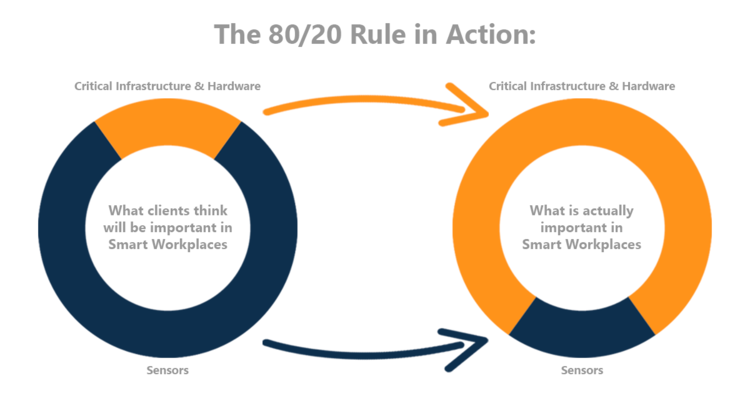You Don't Need Another Workplace Sensor
I talk a lot about sensors in my content, because they usually suck. Similar to Vanity Apps, sensors are often useless or wrapped up in useless software that can’t do what it promises.
Just to be clear - you still need inputs in a smart workplace ecosystem to get outputs and insights. However, the inputs don’t need to be specific hardware with one job, and one job only, like a single desk or room occupancy sensor.
PlaceOS is a software company, but that doesn’t mean that we hate all hardware. Lots of it is just either useless or only good for one task - we’re all about minimal hardware with maximum output - working smarter not harder.
Why sensors in your workplace suck
Desk sensors seem useful if you’re trying to see how often someone is using a desk, but like I mentioned in my recent piece about workplace data, context is important.
A desk sensor might show that a desk is vacant, when in reality someone has just left their desk briefly to make a coffee or use the bathroom. By adding context through other data sources, like whether their laptop is connected to the network via an USB-C dock, or which wireless access point someone is connected to, you can paint a more complete picture of what is happening, and where.
I think many sensors really gloss over the IT maintenance process. IT teams do a great job, but they are often so swamped with mission critical tickets and reports that they just won’t care if a sensor stops working. However, if the wireless network goes down, they’ll fix it ASAP. If your desk sensors have a fault, you’ll be waiting a very long time for them to be back online.
Creating extra installation and maintenance work for IT teams by rolling out sensors when existing infrastructure would give almost as good information much more reliably is a bad idea.
Aside from the hardware, the software associated with sensors also usually sucks.
Lots of this software exists in a proprietary cloud, either designed to sell more hardware, or use revenue from the software to make up for lack of revenue on the hardware side of things. It is very rare to see something focused on user experience and not user stickiness.

Can you get away without using sensors?
Short Answer: probably
Long Answer: Often in introductory meetings with clients, I end up doing a lot of educating and not a lot of “selling”. Lots of clients think that smart workplace = sensors galore but this just isn’t the case.
It’s like the 80/20 rule - 20% of what people think is important (critical infrastructure & hardware like WiFi or O365 etc) ends up getting 80% of the outputs, and 80% of what people think is important (sensors usually) ends up giving 20% of the outputs.
Internet of Things “things” do a good job of marketing themselves, but lots of the time they are just duplicating an output that can come from critical IT infrastructure or existing hardware that also serves another purpose. Aside from being much cheaper to buy and install, this is also faster and more cost effective to maintain and upgrade.
However, like all useful applications of the 80/20 rule, the annoying 80% that gives you 20% of the result is important if you want to go from a good result to a great result. This means that sometimes you will need sensors to get 100% of the way there.
Look holistically at your workplace technology stack and see what you’ve already got covered with your core infrastructure like Wireless Access Points or Network Switch Monitoring. Then, use sensors to make up any gaps.
And to apply the 80/20 rule further - sometimes less is more than enough when it comes to usage data. Often, people think they need individual desk sensors (which individually incur hardware, installation, maintenance and licensing fees) when in reality, we don’t always need to know usage down to a single desk.
Often a zone is good enough, and your existing wifi can probably provide the data for this.
“If you define the problem in detail- a good enough solution with what you already have might tick the box.”
But if you can’t get away without using sensors, what should you look out for?
Look for sensors without proprietary “clouds”, and with good documentation.
A sensor isn’t useful if all of the data is locked in a system - you want to be able to synthesise this information with other sources. This is where PlaceOS integrations come in.